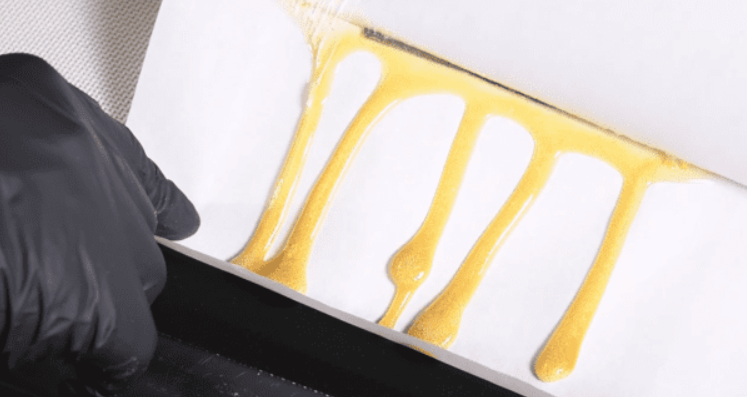- Premium solutions & products
- Global presence with local support
- Quotation within 24 hours
+61 447 734 654 
- Request a quote
- Become a customer
+61 447 734 654 
Learning how to press excellent rosin is a skill all producers and growers should know. The highly potent, solvent-free option provides businesses with an array of products to maximize the brand name and its revenue. With concentrates dominating market shares, and numbers only expected to increase, now is the time to understand how to press rosin like a pro.
Consider these five tips to help you best understand the process of rosin pressing. These tips should provide you with some insight into how you can go from rosin novice to pro in relatively short order.

Rosin Press Tip #1: Pressure - Less Is More
Pressure!
Pushing down on me
Pressing down on you
No rosin ask for
Whether you're classic British singers or cannabis buds in a rosin press, being under high pressure is no good. Older era methods may suggest otherwise, as it is the practice for obtaining maximum yields. But, if you want top quality rosin, a light touch with your force is the way to go.
By applying less pressure to your rosin press, you avoid overdoing it on the flower, hash, or sift, which is critical in getting the best product possible. Applying excess pressure on any material, but especially flower, leads to undesirable plant matter getting into your oil. Plant matter winding up in your oil creates additional problems, such as reduced clarity and undeveloped flavors. Notably, it can inflate yields with lipids, chlorophyll and a variety of organic non cannabinoids.
You can control your extraction whether using a manual press like the Helix and Helix Pro, or a mechanical press like the Pikes Peak and Longs Peak. Set the pressure in your settings, or simply apply the adequate amount of pressure yourself (we even give you recipes to follow along that were developed by solventless experts). No matter what rosin press you use, try to press as gently as possible. This tip is particularly important when working with hash and sift rosin as no one likes a blown bag or wasted time.
Rosin Press Tip #2: Temperatures May Vary
The temperature of your rosin pressing depends on the plant you are working with. Higher quality material requires less heat for a complete extraction. This applies to any source material, be it flower, sift or ice water hash. The opposite applies to older, denser flower, sift, or hash, as well as lower quality material in general. This is because additional heat is required to break down the trichome heads, which if they aren't all already broken or damaged, are likely dried out or simply oxidized.
In general, we recommend keeping your rosin press temperature at or below 220°F no matter what you are pressing, and often much lower for high quality sift or bubble hash rosins. Lower temperatures, around 160°F for example, can be used for higher quality flower, too. That said, some flower may not press well at this level of heat. Have no fear, this is common,
The key is to experiment on your own. Consider rosin pressing like cooking - different types of foods require different temperatures to bring out their full flavors, however the boiling point of terpenes vary widely (and many are well above 350°F). You don't want to get anywhere near there, as significant terpene degradation can happen well below the boiling point, but the point is that not all strains need to be pressed at the minimum temperature. Play with different heat settings on your rosin press with small samples to find what works best for you. Temperature variations can modify terpenes, and in some cases can destroy them. In other cases, they can lead to improved yield results, so like any craftsman or artisan, you have to know exactly what you're working with which can take time.

Rosin Press Tip #3: Advanced Extractions Require Patience
Learning how to press rosin is a craft that anyone can do. However, it is one with less of a learning curve than other forms of extractions which use chemicals, or even growing. While a rosin presser will need some time to understand the precise craft and its machinery, they should have the basics in no time.
Learning advanced extractions will take additional time, both from a user's learning perspective and from the perspective of the extraction time itself. Those looking to conduct terpene separations using hash or premium sift will need patience, because often these require multiple presses and long presses (20 minutes or more in some cases). The same goes for creating solventless cannabinoid extractions, like THCA diamonds.
Practice makes perfect. To ensure you’re practicing with the ideal material for terpene separations, use high quality and quantities of hash. While this isn't always possible for a home grower, aim for 50 grams or more for a proper terpene separation, however many labs are using at least 100 grams at a time. Use a low temperature to start and do a long test, such as 120 - 150°F. Have no fear, that is okay, and the key is to keep a close eye on it. For large quantities of hash or sift, it takes time for the heat to penetrate the material to begin the separation process.
Creating solventless THCA diamonds requires something different, namely much higher temperatures after you've pressed out your terpenes. It often requires multiple presses as well to conduct a proper extraction. Doing so, “cleans” the material as it reaches 300F when it forces the THCA from the bag, which then quickly nucleate.
Be sure to have plenty of material when starting out attempts to perform any solventless mechanical separation technique. Use only top material as suboptimal cannabis won’t do well as there simply are not enough cannabinoids or terpenes to extract well, which often results in frustration because of wasted material that could have been perfectly good mid grade hash rosin or food grade rosin. While all rosin presses in our line work here, a Helix and Helix Pro models allows even at home pressers to get a more hands-on understanding and appreciation for the process.
Outdoor CBD Rosin Pressing PurePressure Rosin Presses

Rosin Press Tip #4: Genetics Matter
One of our key rules is “quality in, quality out.” Quality means sourcing flower with stellar cannabinoid content. That means finding profiles with ideal trichome structures that provide a rich balance of flavor, aroma and effects.
Seek out genetics that are already well known names to start out. Having a reliable handful of strains ensures that your test presses use top quality source material. Once you’ve got the hook of your rosin press, you can branch out using additional quality strains.
To get started, we recommend trying any of the following:
- Chem Dawg, Chem Strains
- Gorilla Glue, Glue Strains
- Cookies & Cake Crosses
- The White, White Fire, White Crosses
- GMO & Crosses (Garlic Cookies)
- Clementine & Banana Split (DNA Genetics)
- MAC (Miracle Alien Cookies)
- Papaya & Related Crosses (Oni Seed Co)
- Sour Kosher, Many Sour Strains
- Purple Punch & Many Pie Strains
Be sure to follow top strain producers, reviewers and other news outlets as well for more flower suggestions.
Rosin Press Tip #5: Textures May Vary, Variable Control Helps Significantly
Don’t beat yourself up if you aimed to create budder but ended up with another texture. This is part of the learning curve and is quite common. This can happen when understanding the capabilities of your rosin press, as well as simply with certain strains behaving differently. Extremely precise variable control makes all the difference, and is something you will learn as you press more.
Once mastered, you can produce various textures with virtually any consistency. Hash rosin provides producers with the most flexibility, resulting in a number of different potential products, such as wax, budder, sugar, sauce, diamonds, cartridges, and more. Be sure to get a hash washing vessel like the Bruteless so you can work with a concentrate capable of such post-processing manipulation.
Keep in mind that producing concentrates and various textures requires an understanding of rosin press post processing techniques. Keep in mind the importance of post-press cooling as well as why gentle heating is so important to separating terpenes from hash, sift rosin and other material. Many textures are formed based on the initial temperatures used, as well as post processing techniques, such as using "Jar Tech" which is where terpenes naturally separate from hash or sift rosin in a glass jar while mildly heated (typically around 80 - 100°F).
Practice makes perfect. With the proper flower and equipment, your learning curve should reduce greatly.